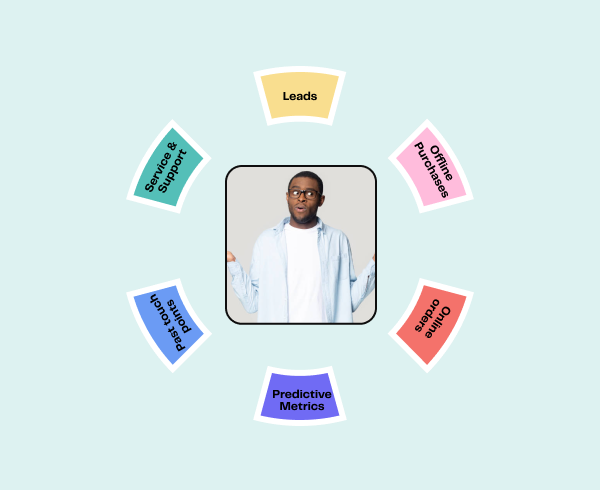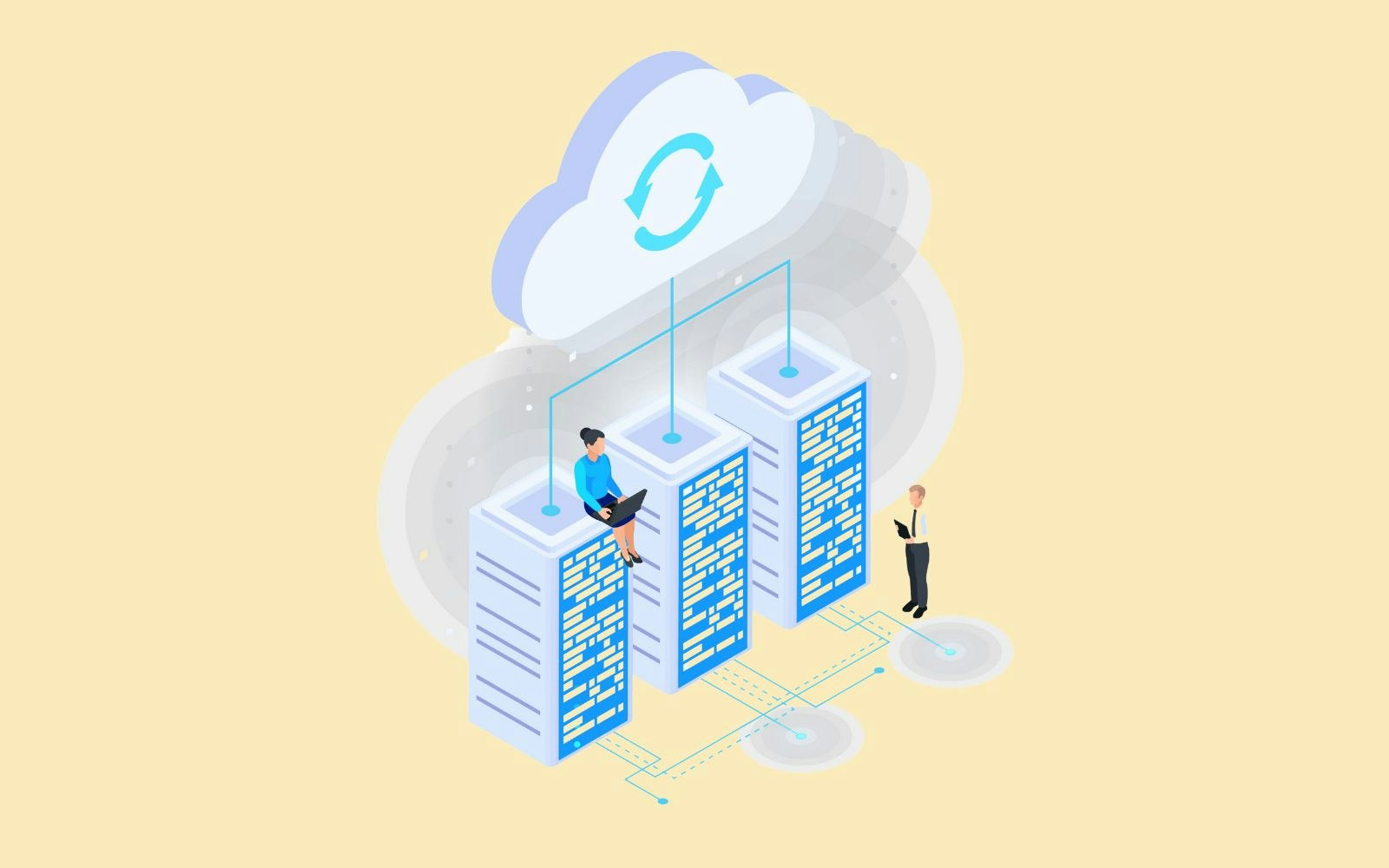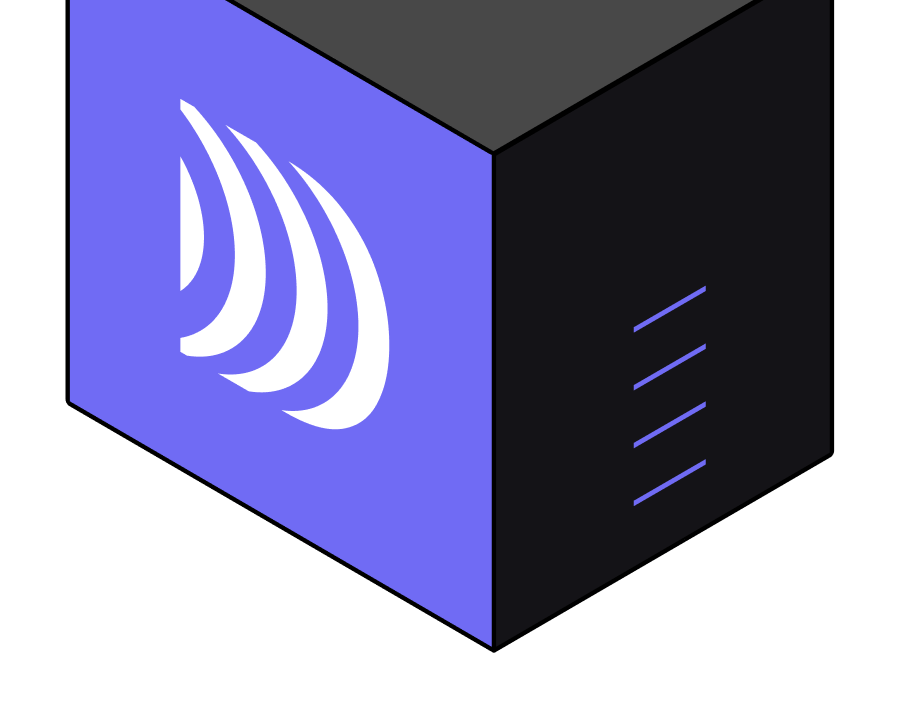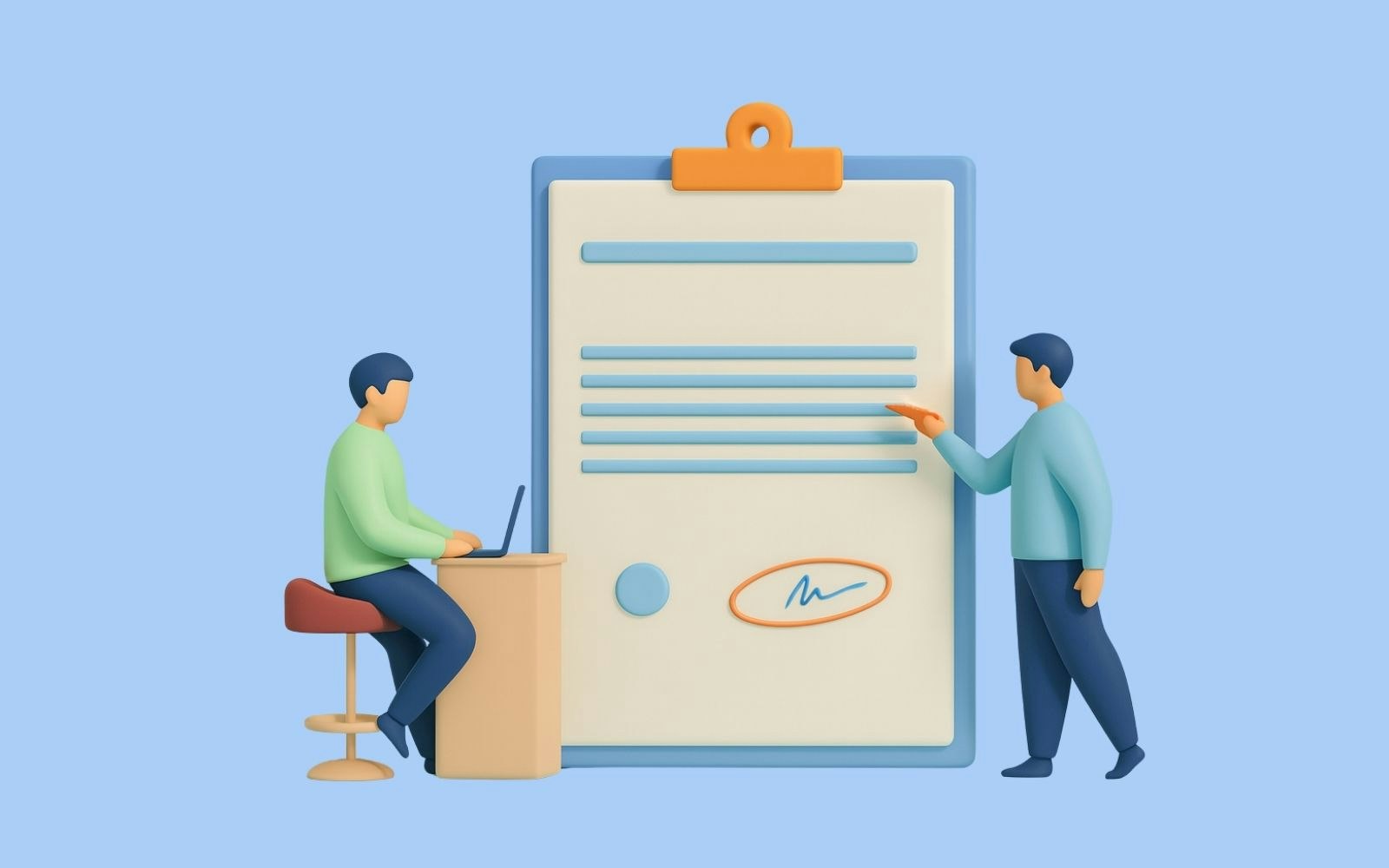
CDP Request For Proposal: A step-by-step guide
6min • Last updated on Jul 11, 2025

Olivier Renard
Content & SEO Manager
The Customer Data Platform (CDP) market is booming. As of today, over 265 solutions are listed on G2 in this category. But not all of them meet the same needs.
As a buyer, it can be difficult to navigate. Which solution should you choose? Which criteria should you rely on? And how can you objectively compare platforms with different architectures and use cases?
To make their decision, companies often turn to a Request for Proposal (RFP). This process provides a structured framework to guide your thinking, facilitate conversations with vendors, and identify the CDP best suited to your business needs.
Key Takeaways:
An RFP helps align teams around a clear framework for selecting your Customer Data Platform. It serves as a reference to compare solutions.
A successful RFP starts by defining your business goals, use cases, and technical constraints.
Selection criteria can be numerous and must be clearly defined. The main ones relate to architecture, features, integration, and vendor support.
👉 Preparing an RFP to select your Customer Data Platform? Discover best practices, common pitfalls, and useful resources to help you make the right decision. 🔍
Why launch an RFP to choose your CDP?
Selecting a Customer Data Platform is a high-impact business decision that involves multiple teams: data, marketing, sales, support, product, procurement, and IT. It requires significant investment and directly affects commercial performance, data quality, and interdepartmental collaboration.
Launching a Request for Proposal (RFP) helps structure your process and avoid missteps. This method formalises each step—from setting objectives to evaluating vendors and selecting a solution.
What is an RFP?
An RFP (Request For Proposal) is a document that outlines your expectations, selection criteria, and constraints. It is sent to multiple providers so they can respond in a comparable format.
Practically, an RFP helps you to:
Align teams (marketing, data, IT) and leadership around a shared framework,
List your priority use cases, and formalise your business and technical requirements,
Objectively compare different solutions (packaged or composable CDPs) based on predefined criteria,
Secure your decision by asking the right questions upfront.
💡 A well-crafted RFP saves time, prevents poor investments or technical misfits, and fosters internal alignment.
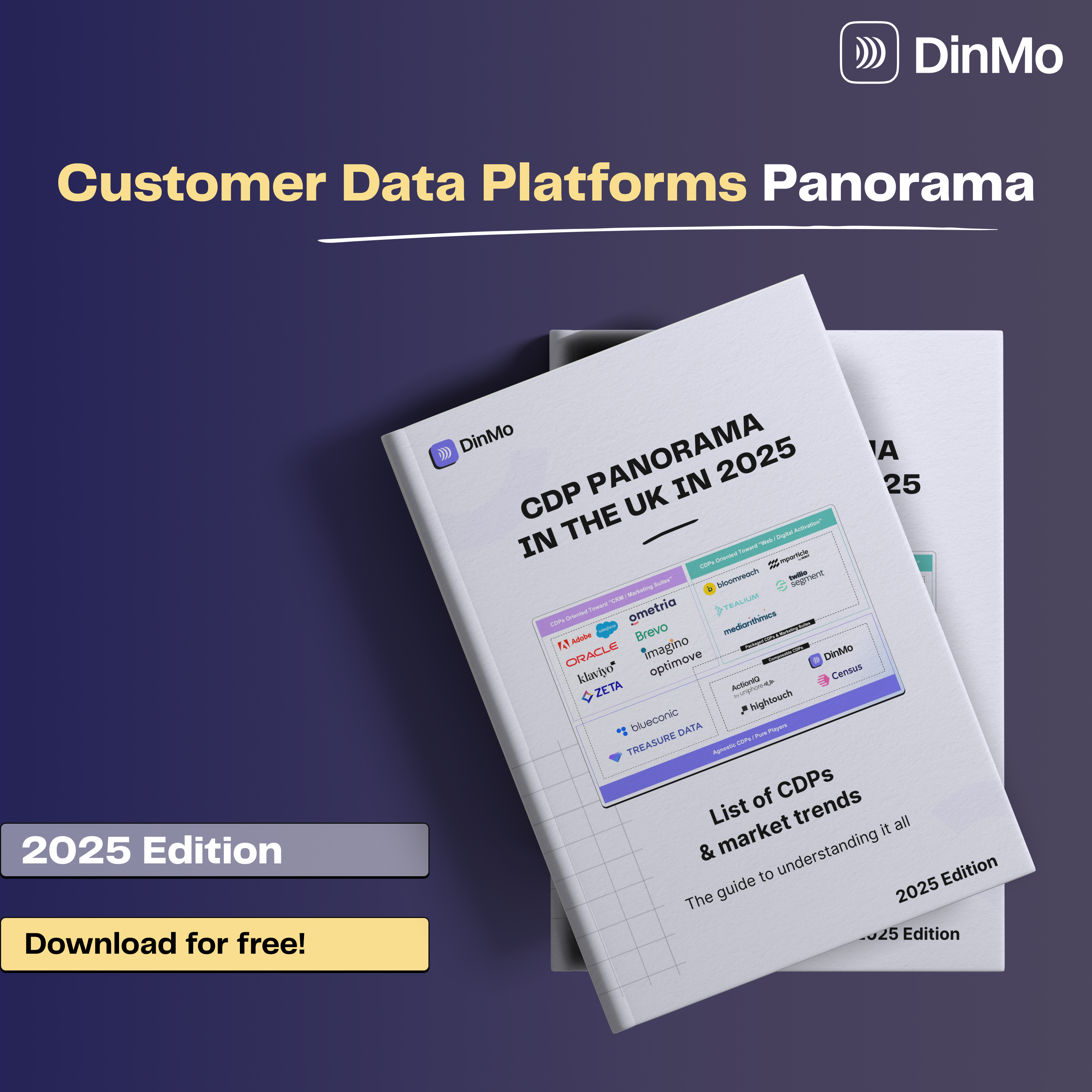
CDP landscape in 2025
The key steps for a successful CDP RFP
As mentioned, there are many CDP providers on the market, and choosing the right one can seem overwhelming. Here’s how to structure your request for proposal and compare Customer Data Platforms in a rigorous and methodical way.
1️⃣ Define the project and formalise your requirements
Before reaching out to vendors, establish the foundations of your project. What are your precise objectives? What problems are you trying to solve? What challenges are you facing?
Common objectives include:
Unifying customer data from various sources,
Deploying new marketing use cases (advanced segmentation, personalised experiences, automation, etc.),
Improving Customer Lifetime Value (LTV),
Enabling business teams to operate independently while reducing the load on the data team.
This phase also involves identifying primary use cases: omnichannel campaigns, automated retargeting, product/channel recommendations, churn risk scoring, marketing performance tracking and optimisation…
To do this effectively, engage stakeholders from the outset. Marketing, data, IT, sales, and customer support teams should all help define the requirements to ensure buy-in and alignment on key priorities.
2️⃣ Draft a structured specification document
The specification document is the core of your RFP. It formalises your expectations and allows vendors to respond in a relevant manner.
Key sections to include:
Company overview and project context: goals, key contacts, and projected implementation timeline.
Procurement process details: deadline for questions, contact point, response deadline, deliverable format.
Information requested from the vendor: client references, team structure, revenue, etc.
Highlighted use cases: boosting customer loyalty, optimising cross-channel campaigns, improving ad performance, increasing LTV, reducing churn, personalising the experience.
Current and desired technical architecture: existing stack, scalability, packaged vs composable approach.
Requirements around data collection, storage, identity resolution, segmentation, activation, and governance.
Security and compliance needs (e.g., GDPR, CCPA).
💡 Our tip: be specific about the CDP features you're expecting.
Data collection from multiple sources, unified profiles, audience segmentation, omnichannel activation, real-time personalisation, AI decisioning, consent management, performance measurement…
Don’t hesitate to detail your evaluation criteria and list specific questions per feature. A precise brief helps vendors position themselves clearly and makes it easier to filter responses.
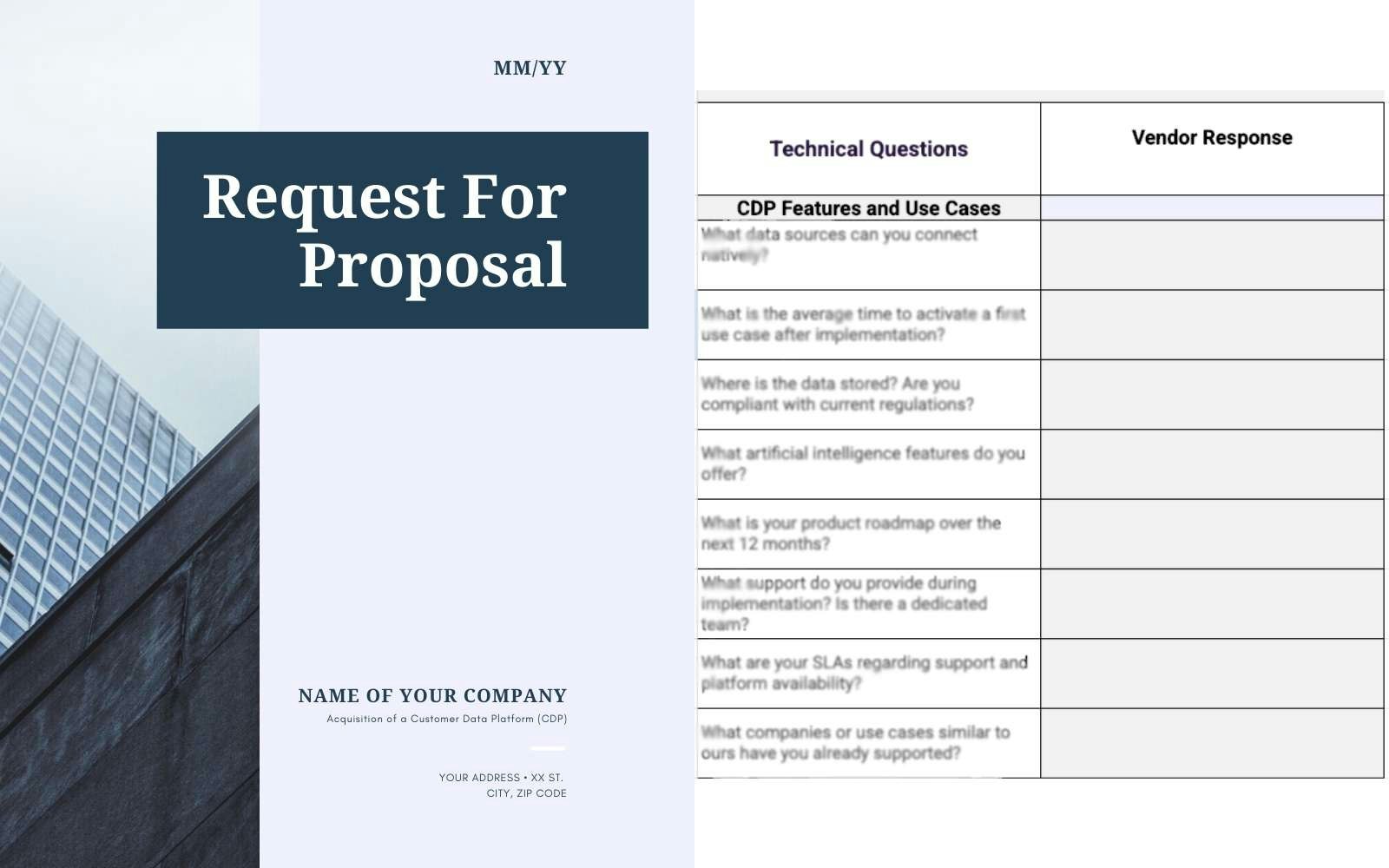
Example specification document
3️⃣ Evaluate responses using a scoring framework
At this point, vendors will have sent their proposals. It’s time to evaluate them objectively.
Use a scoring matrix to assess each solution based on well-defined criteria:
Feature breadth: CDP capabilities in collection, unification, segmentation, activation, personalisation, etc.
Time-to-value: speed of deployment, ease of use, and time to first use case.
Compatibility with your existing stack: Can the CDP integrate smoothly with your CRM, analytics tools, activation platforms, data warehouse? Is the architecture flexible and secure? Any overlap?
Support quality: onboarding clarity, support responsiveness, documentation quality, training resources, and post-implementation support.
Total cost of ownership (TCO): including licences, implementation, potential overage charges, and ongoing operating costs.
Scalability: Can the solution grow with your needs (new use cases, data volumes, or international expansion)?
To refine your selection, ask vendors to respond to concrete scenarios: segment based on a specific event, trigger a reactivation campaign, calculate a score, launch a new offer, etc.
Finally, schedule demonstrations or a POC (Proof of Concept) with shortlisted vendors. This allows you to test usability, validate features, and spot any limitations.
How to evaluate and choose between solutions?
Focus on specific criteria and ask the right questions during your initial discussions with vendors.
Key evaluation criteria
Here are the elements to consider first in your grid:
Criterion | What to assess |
|---|---|
Integration with your existing infrastructure | Compatibility with your data warehouse, CRM and analytics tools, etc. Risk of redundancy with existing stack. |
Architecture and interoperability | Type of architecture (composable, hybrid, monolithic)? Impacts on governance, security, flexibility, and stack evolution. |
Unification and identity resolution | Ability to consolidate customer data from multiple sources into a unified profile (Customer 360, cross-device). |
Advanced segmentation | Creation of dynamic segments based on behaviour, events, or attributes. Predictive segmentation capabilities (purchase probability, LTV scoring, churn…)? |
Artificial Intelligence (AI) | Does the platform include AI features (personalised recommendations, next best action/offer, natural language segment generation, automatic suggestions)? |
Omnichannel activation and personalisation | List of supported channels (email, web, mobile, SMS…), number of connectors. |
Usability and observability | Interface simplicity, alert management, no-code features, marketing team autonomy for segmentation. |
Security and compliance | GDPR compliance, consent management, data localisation, access security. |
Total cost | Pricing model, volume-based costs, optional modules, support. Evaluate return on investment. |
The main criteria for choosing a CDP
💡 Note: Composable Customer Data Platforms rely on your existing data warehouse. This modular approach offers more flexibility thanks to native interoperability with your data stack.
It also avoids duplicating data within the CDP’s environment: this is known as a zero-copy architecture.
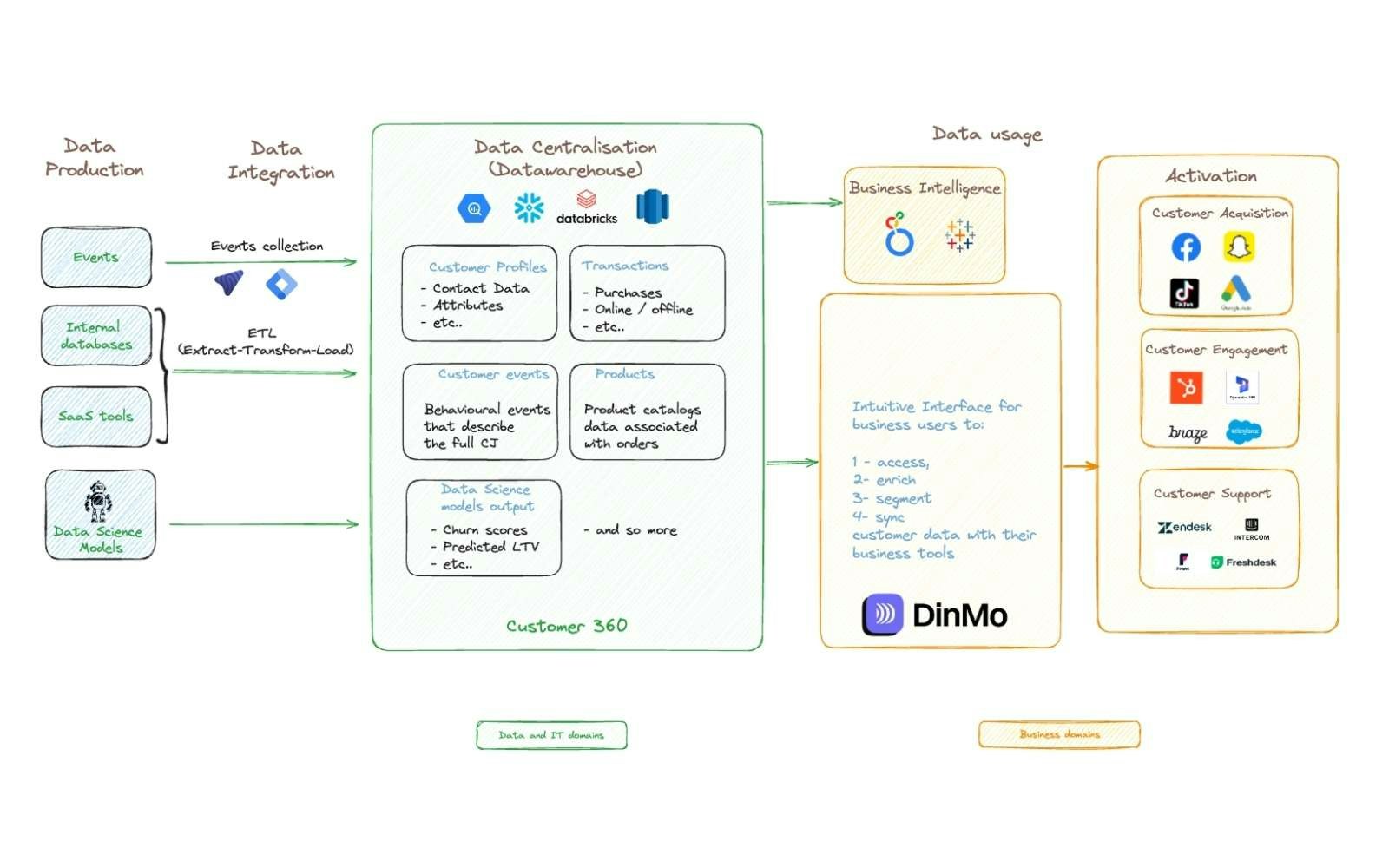
How the DinMo composable CDP works
Frequently asked questions to CDP vendors
Which data sources can you connect natively?
What is the average time to activate a first use case after implementation?
Where is the data stored? Are you compliant with current regulations?
What artificial intelligence features do you offer?
What is your product roadmap over the next 12 months?
What support do you provide during implementation? Is there a dedicated team?
What are your SLAs regarding support and platform availability?
What companies or use cases similar to ours have you already supported?
These questions help assess the solution’s maturity, adaptability to your context, and the quality of vendor support.
Conclusion
Launching an RFP to choose a Customer Data Platform is a critical business milestone. Clarify your needs, define clear evaluation criteria, and rigorously assess the options to make a decision aligned with your goals.
With such a diverse vendor landscape, focus on the approach that best meets today’s demands for omnichannel activation, governance, and performance. Pay particular attention to governance, security, and compliance based on your chosen architecture (composable or traditional).
👉 Preparing a CDP RFP or starting your evaluation? Our team is here to help you save time and ask the right questions.

















